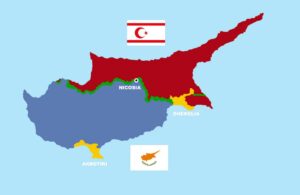The article explains the differences and similarities between Cyprus and Malta as tax havens, with a focus on the benefits for high-net-worth individuals (HNWIs) and retirees. The article explains the population, salaries, and GDP per capita in each country, and compares their tax systems, including the non-dom residentship program in Malta. The article also touches on the cost of living in both locations and how it affects retirees.

Cyprus
Cyprus is an island nation located in the eastern Mediterranean, with a population of approximately 1.2 million people. The country has a diversified economy, with a strong focus on the service sector, particularly financial services, tourism, and shipping. The average monthly salary in Cyprus is around 1,500 euros, and the country’s GDP per capita is about 28,000 euros. Cyprus is known for its favorable tax system, which includes a corporate tax rate of 12.5%, no inheritance tax, and no tax on dividends or capital gains for non-residents.
Malta
Malta is a small island nation located in the central Mediterranean, with a population of approximately 500,000 people. Like Cyprus, Malta’s economy is also service-based, with a focus on financial services, gaming, and tourism. The average monthly salary in Malta is around 1,400 euros, and the country’s GDP per capita is about 27,000 euros. Malta has a competitive tax system, which includes a corporate tax rate of 35%, but offers various tax incentives and exemptions for foreign investors and companies.
Tax comparison
When it comes to taxes, Cyprus and Malta have some similarities and differences. Cyprus has a territorial tax system, which means that only income earned within the country is taxed. On the other hand, Malta has a worldwide tax system, which means that residents are taxed on their global income. However, Malta offers a non-dom residentship program, which allows foreign individuals to establish tax residency in Malta but pay tax only on their Maltese-source income. This program has become popular among HNWIs, particularly those from the UK.
In terms of corporate taxes, Cyprus has a lower rate of 12.5%, compared to Malta’s rate of 35%. However, Malta offers various incentives and exemptions for foreign investors, such as the participation exemption, which eliminates tax on dividends and capital gains from qualifying subsidiaries. Malta also has a favorable tax treaty network, with over 70 double taxation treaties in place.

Non-Dom Residentship
The non-dom residentship program in Malta allows foreign individuals to establish tax residency in the country but pay tax only on their Maltese-source income. This program has become popular among HNWIs, particularly those from the UK who are looking for an alternative to the UK’s non-dom regime. The program requires a minimum annual tax contribution of 15,000 euros and a net worth of at least 550,000 euros. Cyprus also has a non-dom program, but it is less popular than Malta’s.
HNWI in Malta and Cyprus
Both Malta and Cyprus are attractive destinations for HNWIs, particularly those looking to establish residency in a tax-friendly jurisdiction. Malta has a thriving financial services sector, with a strong focus on wealth management and private banking. The country also has a diverse range of investment opportunities, including real estate, gaming, and renewable energy. Cyprus, on the other hand, is known for its shipping industry and has recently been promoting itself as a hub for investment in blockchain technology. Both countries offer various incentives and exemptions for foreign investors and have programs in place to attract HNWIs, such as citizenship by investment.
Retirees
Both Cyprus and Malta are popular destinations for retirees, particularly those from Northern Europe. The cost of living in both locations is relatively low compared to the cost of living in other European countries, and the climate is warm and sunny throughout the year. However, the cost of living in Malta is generally higher than in Cyprus, particularly in terms of accommodation and healthcare. Both countries offer a range of residency programs for retirees, such as the Cyprus Retirement Program, which allows non-EU citizens to retire in Cyprus and benefit from a reduced income tax rate of 5%, and the Malta Retirement Program, which offers a flat tax rate of 15% on foreign income. Retirees are also attracted to the relaxed lifestyle, rich history, and natural beauty of both countries.
Conclusion
Cyprus and Malta are two popular destinations for HNWIs and retirees looking to establish residency in a tax-friendly jurisdiction with a high quality of life. Both countries offer a range of incentives and exemptions for foreign investors, as well as residency programs for retirees. While Cyprus has a lower corporate tax rate, Malta has a favorable non-dom residentship program and a diverse range of investment opportunities. The cost of living in both locations is relatively low compared to other European countries, and the climate is warm and sunny throughout the year. Whether you are a HNWI looking for a tax-efficient jurisdiction or a retiree seeking a relaxed and enjoyable lifestyle, Cyprus and Malta are both worth considering.














